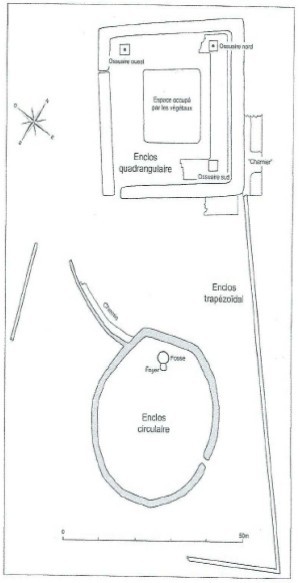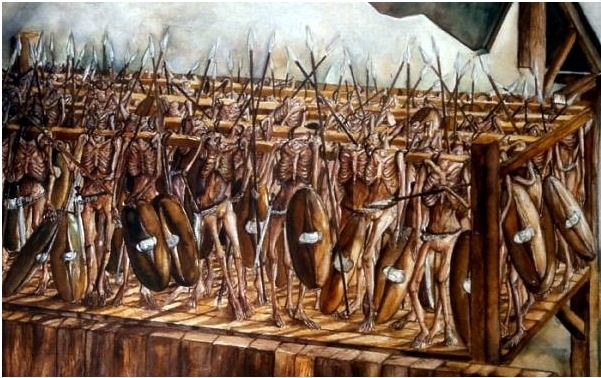The trophy at Ribemont-sur-Ancre (Somme)
The site of Ribemeont-sur-Ancre is situated on the Northern flank of the Ancre valley, 14 km north of Amiens. It was excavated between 1966 and 2003. The whole site covers an era of well over 7 acres and consists of a vast complex of enclosures fitting into three sets. At the northmost end, a square precinct, some fifty meters square was set by for the god who had granted the victory. In front of it a second, vaster, trapezium shaped enclosure was intended for a gathering the victorious warriors. At its centre a smaller circular precinct enclosed in high wattle and daub walls harboured the remains of some tens of dead warriors from the victorious side.

The origins of this site lie with a critical battle circa 260 BC. It set the Ambiani[2] against Armorican peoples[3] who, according to Jean-Louis Brunaux, aimed to control the whole English Channel coast as well as its hinterland. The Somme and the Seine valleys were the two major communication lines towards the Channel and beyond, towards Brittany and the North Sea. It is thanks to the coins retrieved there that the protagonists have been identified. The number of dead quantified by a forensic scientist and estimated at between 500 and 700 suggests that at least 5000 warriors were engaged in the battle. The weaponry and the adornments that were recovered suggest that we have here elite warriors in full military regalia. The eventual victors, the Belgae, gave the battle field a ritual treatment, hence the erection of a trophy to thank the gods and honour and glorify the victors. Their armed warriors were exposed headless, standing upright close together on 4 or 5 rows, somewhat like an army corps on a mound. This exposure was aimed at leaving the bodies prey to the vultures and other scavenging birds who took the warriors' souls to heaven as they did in the Persian world[4]. When the exposed bones had turned white and the weapons had oxydized, the enclosure was destroyed and the bones and weapons were thrown in the foundation ditch of the rounded precinct reopened for that purpose.

The sacred site at Ribemont-sur-Ancre thus operated as a sanctuary, a trophy[5] and a memorial. It retained this role under the Principate[6] and was abandoned in the 4th century AD.







